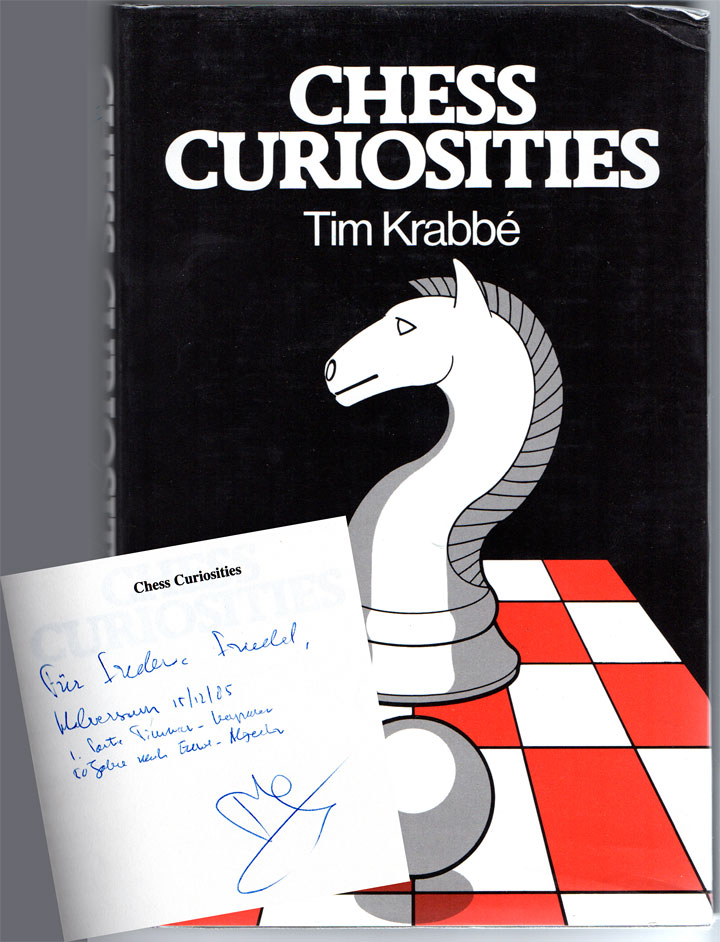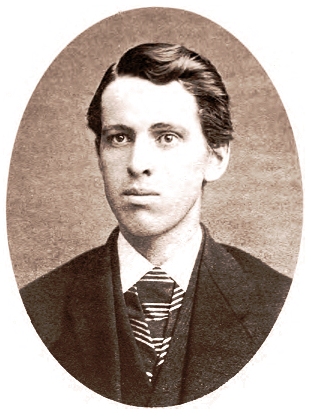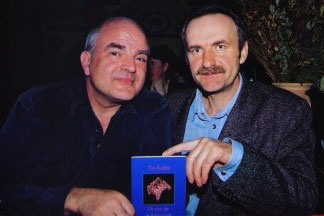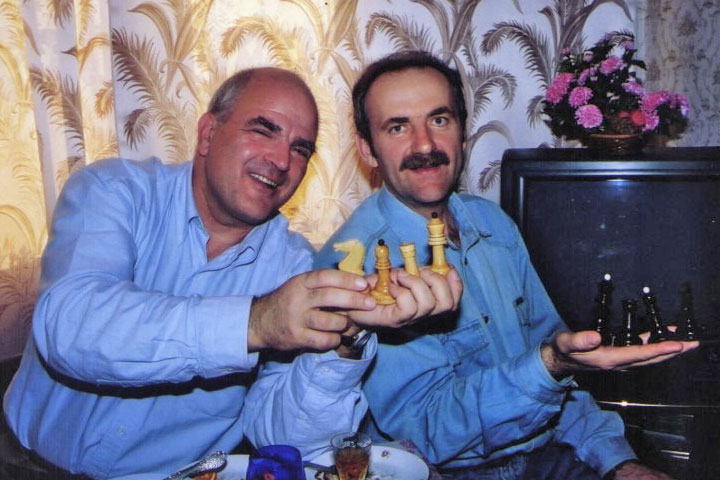 Tim Krabbé was born in Amsterdam on April 13, 1943. He has written for most major Dutch periodicals, and his books have been translated into 18 languages. Some have been turned into films – English readers will know him primarily for The Vanishing, which was made into two separate films, and The Cave, which was published in 2000. But he is best known for The Rider (De Renner), a cult classic about cycle-racing, of which Matt Seaton of The Guardian wrote: "Nothing better is ever likely to be written on the subjective experience of cycle-racing."
Tim Krabbé was born in Amsterdam on April 13, 1943. He has written for most major Dutch periodicals, and his books have been translated into 18 languages. Some have been turned into films – English readers will know him primarily for The Vanishing, which was made into two separate films, and The Cave, which was published in 2000. But he is best known for The Rider (De Renner), a cult classic about cycle-racing, of which Matt Seaton of The Guardian wrote: "Nothing better is ever likely to be written on the subjective experience of cycle-racing."
As a player, Tim was, from 1967 to 1973, among the twenty best chess players in the Netherlands. He has written a number of chess books, the best known of which deal with chess curiosities. He also composed unusual chess puzzles and positions, all of which display a degree of chess humour. Here's an example we have treasured for a long time.
The Laws of Chess used to defined castling as "a move of the king and either rook of the same colour, counting as a single move of the king and executed as follows: the king is transferred from its original square two squares towards the rook on its original square, then that rook is transferred to the square the king has just crossed." In addition, the king and rook must not have previously moved in the game, and the king may not be in check or cross or lands on a square that is attacked. Tim Krabbé exposed a loophole that existed in this definition of castling, and he did it with an amusing chess problem:
Clearly the first move of the solution is 1.e7 (you can enter moves in the above diagram). If Black replies 1...Kd3 then 2.e8Q threatens 3.Qe2#, so Black plays 2...gxf3. But now White has 3.0-0-0 mate. Very pretty, but not the point of the position. That is the defence 1...Kxf3. But now 2.e8Q is a mistake because 2...Kg2 makes it a mate in four. But: White can play 2.e8R! The threat now is 3.0-0#. But how does the rook underpromotion refute the defence 2...Kg2? Well, White plays 3.0-0-0-0! – he castles by moving his king to e3 and the newly promoted rook, which has not moved yet, to e2.
If you want to replay the solution on the above and the following interactive diagrams you may wonder how to underpromote. It is a little bit difficult on the small diagram – but easier on the replay board at the bottom of the page, especially if this is enlarged using the maximize button just below the board.

The way to underpromote is to grab the the pawn and move it to the right side of the promotion square. The queen, the most common promotion piece, will appear in full size, whereas underpromotion pieces are shown next to it. Move the cursor or your finger to the desired piece to underpromote – in the above case to a rook.
The above is a joke problem, but after it appeared (we believe) FIDE inserted a vital phrase into § 3.8.2 of the Laws of Chess (given in italics): "Castling is a move of the king and either rook of the same colour along the player’s first rank, counting as a single move... etc.

Curiouser and Curiouser
In 1974 and 1977 Tim Krabbé wrote two books in Dutch on chess curiosities, which I purchased very early on. The titles translate to "Chess Curiosities" and "New chess curiosities." I read these books at the time — quite an achievement when you take into account that I do not speak the language. However, I discovered that the grammar and syntax of Dutch are very similar to German, and a large percentage of the words are recognizable to a German speaker. All I had to do was to learn a few dozen new words to be able to understand most of what the author was saying. Naturally, all of the chess was trivial to follow.
 In 1985 Krabbé thankfully wrote "Chess Curiosities" in English. It was published by George Allen Unwin in London — a mostly new book, incorporating some material from the two previous Dutch books. You can still get a (used) copy at Amazon – for $976.41 + $5.86 shipping. I am a proud owner of two copies — but no, I will not sell one. Both were given to me by Tim, and both have dedications in them. The first reads (in German):
In 1985 Krabbé thankfully wrote "Chess Curiosities" in English. It was published by George Allen Unwin in London — a mostly new book, incorporating some material from the two previous Dutch books. You can still get a (used) copy at Amazon – for $976.41 + $5.86 shipping. I am a proud owner of two copies — but no, I will not sell one. Both were given to me by Tim, and both have dedications in them. The first reads (in German):
Für Frederic Friedel,
Hilversum 15/12/85
1. Partie Timman-Kasparov
50 Jahre nach Euwe-Aljechin
Tim
He gave me the book on December 15, 1985, during the first game of a Kasparov vs Timman match, signing it with the above note reminding me that the game was taking place exactly 50 years after the Aljechin-Euwe match. That was decided on December 15, 1935 in the 30th game with a 15½-14½ victory of the Dutch champion (Kasparov beat Timman 4-2). Tim always keeps meticulous track of such things.
One of the chapters in the Chess Curiosity book is devoted to underpromotion, and it contains a story that moved me deeply at the time. So deeply in fact that I retold it to anyone who would listen. I also did some additional research and wrote an extensive article in the Magazine Computerschach & Spiele in 1986. For chess players who were not born at the time, I present a condensed version of that article — with apologies to those who know the story.
The Babson task — tragedy and triumph
 Chess problem composers are a special species of human beings. You cannot use normal standards to judge their works, their dedication or their behaviour. Judge for yourself. The following story is as true as it is poignant.
Chess problem composers are a special species of human beings. You cannot use normal standards to judge their works, their dedication or their behaviour. Judge for yourself. The following story is as true as it is poignant.
Around 1925 the American Joseph Ney Babson, pictured on the right as a young man [source: Wiki] was experimenting with underpromotion in chess problems. The first mate problem to contain all four promotions in a single position (known by the German word "Allumwandlung") had been composed sometime before, but Babson was thinking about a truly awesome task: symmetrical underpromotion for both sides. The "Babson task", as it came to be known, was to compose a mating problem with the following breathtaking form:
- White makes the key move
- Black defends by promoting a pawn to queen, rook, bishop or knight.
- In each case, White is forced to promote to a queen, rook, bishop or knight respectively to force mate.
The task was so daunting that although a prize of $20 was set out, nobody really put too much effort into it. In 1934 André Chéron, the endgame expert who had composed problems with eightfold rook promotions, declared that the Babson task would never be solved.
Then, in 1960, the French metallurgic engineer Pierre Drumare made a life-changing decision. Drumare, of whom I could find no pictures, was one of the founders of the society "Les Amis du Problème d’Echecs" and the magazine "Thémes-64". He had composed many direct mates and fairy chess problems. But now he decided to undertake what he called a "Search for the Impossible" and started to spend an average of four hours a day trying to compose the Babson problem. After the first year, he reported that he had found no proper solution, but was now able to appreciate the difficulty of the enterprise. Of course, he did not give up — as the years went by he devoted more and more time to the Babson task.
It was the knights that caused him the greatest distress. Their limited reach made it impossible for a defensive underpromotion to a knight to force an offensive underpromotion to the same piece, on the opposite side of the board. He came to the conclusion that the knight was an imperfect piece that should be replaced by the "nightrider", a fairy piece that makes knight moves to any distance (e.g. from b1 to g8 or from g1 to e5). He actually composed a Babson problem with nightriders — it contained three rooks, two bishops on white squares, White was in check and captured the black queen on his first move. Nobody, including Drumare, was satisfied with this solution.
So he continued with his work, investing even more time in the endeavour. And in 1980 he presented to the world his Babson problem.
"Words (and chess sets) fail here," wrote Tim Krabbé in Chess Curiosities. The position is completely illegal, and during the solution (which we shall not give here) nine rooks and nine bishops appear simultaneously on the board. People called it monstrous, but Drumare explained that it was not his fault, but that of the accursed knight.
Two years later Drumare finally gave up. "After 22 years of exhausting labour I now have the certainty that the quadruple echo promotion will never be perfectly realised in a direct mate problem." That was 1982.
Do you really want to read on?
Scroll down at your own risk.
In March 1983 a problem appeared, as number 23 in the "Originals" section of the magazine Shakhmatny. It was by a 26-year-old soccer and chess trainer from Kazan named Leonid Vladimirovich Yarosh, who had previously published only three problems in Shakhmatny and in Thèmes-64.
The Cyrillic caption to this problem said: "!!!Estj task Babsona?" and the editor asked the readers to decide whether "everything in this extraordinarily difficult construction is really correct." It is, as we were able to confirm with a problem solving program:

The computer shows us: if Black defends by capturing on b1 and promoting to a queen, White must capture on b8 and also promote to a queen in order to mate in four. If Black promotes to a rook White must counter-promote to a rook, if Black takes a bishop White must do likewise, and if Black promotes to a knight White must take a knight too. The full solution goes as follows:
1.Rxh4 and now:
1...cxb1Q 2.axb8Q Qxb2 3.Qb3 Qc3 4.Qxc3# (or 2...Qe4 3.Qxf4 Qxf4 4.Rxf4#)
1...cxb1R 2.axb8R Rxb2 3.Rb3 Kxc4 4.Rxf4#
1...cxb1B 2.axb8B Be4 3.Bxf4 Bxh1 4.Be3#
1...cxb1N 2.axb8N Nxd2 3.Nc6+ Kc3 4.Rc1#
 "There it was: the Babson task," wrote Tim Krabbé. "Tantalisingly simple, and of an elegance no one in his right mind could have dreamt of." 19 years later, in 2002, Tim Krabbé undertook an adventerous trip to Kazan to meet the unknown composer, who he has made sure would be remembered as long as there is chess. The pictures of Yarosh were made by Rick Goetzee, "my companion on my trip to God," (Krabbé) and originally appeared in the Dutch newspaper Algemeen Dagblad.
"There it was: the Babson task," wrote Tim Krabbé. "Tantalisingly simple, and of an elegance no one in his right mind could have dreamt of." 19 years later, in 2002, Tim Krabbé undertook an adventerous trip to Kazan to meet the unknown composer, who he has made sure would be remembered as long as there is chess. The pictures of Yarosh were made by Rick Goetzee, "my companion on my trip to God," (Krabbé) and originally appeared in the Dutch newspaper Algemeen Dagblad.
If you want to experience something truly miraculous then go through the solution on our replay board at the bottom of the page, with the engine switched on. It is pure delight to find out why the thematic variations work, to understand why in each line every other white promotion fails.
It is difficult to imagine what Drumare must have felt when he saw Yarosh's problems. "I have erred, but I am happy for the art of the chess problem," he wrote in Thèmes-64, and in a personal letter to Yarosh: "Your problem will be admired in the future, like we admire the masterpieces of our ancestors in the museums and cathedrals."
The amazing Yarosh did not leave it at that. The ugly capture key had preyed on his mind and a few months later he presented another perfect Babson, again in the form of a light, elegant position with a perfect key move. He received a first prize for this.
The key is 1.a7! and now the Babson unfolds:
1...axb1Q 2.axb8Q Qxb2 3.Qxb3 Qc3 4.Qaxc3#
1...axb1R 2.axb8R Rxb2 3.Rxb3 Kxc4 4.Qa4#
1...axb1B 2.axb8B Be4 3.Bxf4 Bxa8 4.Be3#
1...axb1N 2.axb8N Nxd2 3.Qc1 Ne4 4.Nc6#
To really appreciate this problem you should read Tim Krabbé's full solution.
In this second version of the problem there is a tiny little flaw: in the last move of the line with the bishop underpromotions White can mate with either 4.Be3 or 4.Be5. So Yarosh, for whom our repertoire of adjectives now fails, went to work and in the same year produced a third, completely different version without the mating dual.
In this most perfect version the incredible Yarosh has even got rid of the mating dual in the bishop line. He dedicated this problem to P. Drumare. The solution starts with 1.Nxc3 and then:
1...c1Q 2.exd8Q! Qxc3 [2...Qxe3 3.Rc4 Qe4 (3...Qxe2 4.Nxe2#)] 3.Nxf6 Qxb2 [3...Qd4 4.Bxd4#] 4.Qxb2#
1...c1R 2.exd8R! Rxc3 3.Nxf6 Kxf6 4.Bxc3#
1...c1B 2.exd8B! Bxe3 3.Rc4 Kd6 4.Ne4#
1...c1N 2.exd8N! Nb3+ 3.Kb6 Nxa1 4.Nf7#
The story is by no means over. But here I will hand over to Tim Krabbé, whose dedication to the subject has kept us fully informed over the years. On his web site Chess Curiosities he has an article entitled Sons of Babson which lists 17 positions relating to the Babson task.
Replay all the Yarosh problems on this page
We thank you, Tim, for all the entertainment you have provided over so many years!


















 Tim Krabbé was born in Amsterdam on April 13, 1943. He has written for most major Dutch periodicals, and his books have been translated into 18 languages. Some have been turned into films – English readers will know him primarily for The Vanishing, which was made into two separate films, and The Cave, which was published in 2000. But he is best known for The Rider (De Renner), a cult classic about cycle-racing, of which Matt Seaton of The Guardian wrote: "Nothing better is ever likely to be written on the subjective experience of cycle-racing."
Tim Krabbé was born in Amsterdam on April 13, 1943. He has written for most major Dutch periodicals, and his books have been translated into 18 languages. Some have been turned into films – English readers will know him primarily for The Vanishing, which was made into two separate films, and The Cave, which was published in 2000. But he is best known for The Rider (De Renner), a cult classic about cycle-racing, of which Matt Seaton of The Guardian wrote: "Nothing better is ever likely to be written on the subjective experience of cycle-racing."

 In 1985 Krabbé thankfully wrote "Chess Curiosities" in English. It was published by George Allen Unwin in London — a mostly new book, incorporating some material from the two previous Dutch books. You can still get
In 1985 Krabbé thankfully wrote "Chess Curiosities" in English. It was published by George Allen Unwin in London — a mostly new book, incorporating some material from the two previous Dutch books. You can still get  Chess problem composers are a special species of human beings. You cannot use normal standards to judge their works, their dedication or their behaviour. Judge for yourself. The following story is as true as it is poignant.
Chess problem composers are a special species of human beings. You cannot use normal standards to judge their works, their dedication or their behaviour. Judge for yourself. The following story is as true as it is poignant.
 "There it was: the Babson task," wrote Tim Krabbé. "Tantalisingly simple, and of an elegance no one in his right mind could have dreamt of." 19 years later, in 2002, Tim Krabbé
"There it was: the Babson task," wrote Tim Krabbé. "Tantalisingly simple, and of an elegance no one in his right mind could have dreamt of." 19 years later, in 2002, Tim Krabbé 





